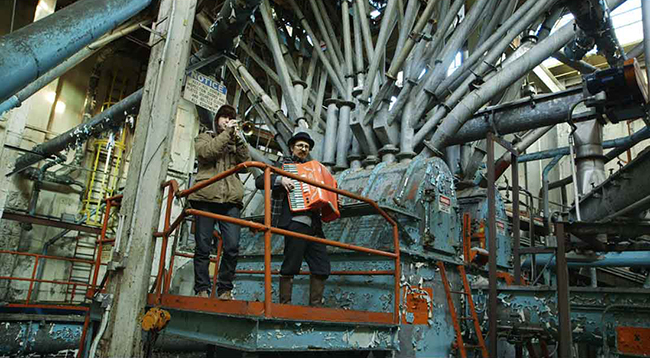
We are celebrating 15 years — and counting — of stories that are deeply researched and deeply felt, that build a historical record of what the city has been.
We are celebrating 15 years — and counting — of stories that are deeply researched and deeply felt, that build a historical record of what the city has been.
To mark the fifth anniversary of the launch of Urban Omnibus, we look at themes that have emerged in our content over time and think about what those threads reveal about the needs, desires, and priorities of the city today.
Countless guidebooks for New York City will send visitors to the Great Lawn in Central Park or to the top of the Empire State Building. They might give a brief history of the city, of the boroughs’ unification into a singular metropolis and the dark days of the 1970s. But the many layers of a place as vast, ephemeral, and old as this city can only be (even partially) fathomed by true exploration of the place. Whether hidden in plain sight, locked away, or forgotten, these layers beg to be unearthed. Here on Urban Omnibus, we encourage — and occasionally organize — forays throughout the city to engage with the concrete places and people we celebrate online.
For the armchair explorer, intrepid photographers offer enticing glimpses into those parts of our cities that are most out of reach. Through photography and extensive historical research, Steve Duncan reveals the hidden beauty of the tunnels, sewers, rivers, and utility networks that run beneath our streets. In so doing, he reminds us of the importance of these interconnected, sometimes invisible infrastructural and natural systems. Stanley Greenberg’s photography of New York’s unseen places encompasses water systems, architecture under construction, physics labs, telescopes, dams, and more, exposing how things work. And Christopher Payne captures the disappearing history of an island in the East River unoccupied since 1964.
These hidden pieces of our world are often inaccessible by design, which can make documenting them difficult without jumping through bureaucratic hoops or breaking the law. Urban exploration that embraces trespassing departs from the idea, as Greenberg articulates it, that “the public’s right to know trumps rules of access.” Wanderlust, a group engaged in “transgressive placemaking” seeks to bring people into inaccessible spaces to explore and engage with the locales’ curiosities and histories. Legality aside, the group operates under an ethic of trespassing that seeks to respect places while bringing their beauty to a wider audience.
While off-limits places can provide fertile ground for new discoveries, plenty of places worthy of exploration may just be hidden by familiarity or a few pesky subway transfers. One can camp in the relative wild of a former airport turned park at Floyd Bennett Field, tour a detention complex for a more informed perspective on the spaces and experience of the criminal justice system, engage with a former self-governing town founded for religious freedom that was swallowed by the city, or attend a film festival with the exploration of the neighborhood — on the screen and in the location of the screening — at its core.
Breaking away from the constraints of the world’s beaten path is the goal of Atlas Obscura, an online compendium of weird and wondrous places. Pointing their readers to sites such as Track 61 — an abandoned subway track under the Waldorf-Astoria — to a colossal statue of Pinocchio in Sweden, they urge people to look around, acknowledge the possibilities and curiosities of our surroundings, and go out and find more.

The Wanderlust “Candyland Trespass Safari” took 50 people on an adventure through the abandoned Domino Sugar Refinery on the Williamsburg waterfront. Musical finale by Mat Dallow and Matt Giella. Photo courtesy of Wanderlust.
The views expressed here are those of the authors only and do not reflect the position of The Architectural League of New York.